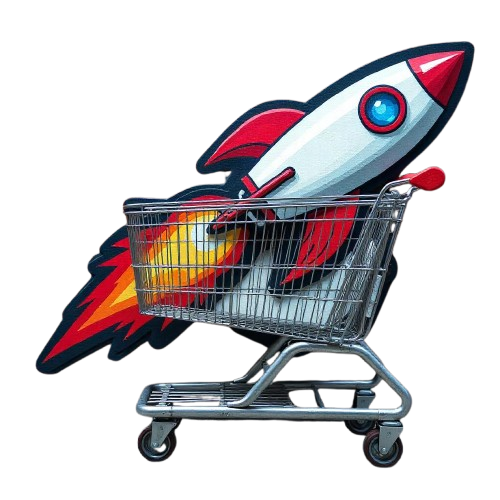When it comes to running a successful Shopify store, having a great product isn’t enough—you need visibility. This is where SEO optimization becomes crucial. Shoppers rely heavily on search engines like Google to find products, and if your product pages aren’t optimized, you’re missing out on valuable traffic. This comprehensive guide breaks down the exact steps to optimize your Shopify product pages for e-commerce SEO. From keyword research and meta tags to structured data and technical SEO, we cover everything you need to rank higher, increase organic traffic, and boost sales.
Why SEO Matters for Shopify Product Pages
Search Engine Visibility Equals Sales
If people can’t find your products, they can’t buy them. SEO ensures that your Shopify product pages appear when shoppers search for relevant keywords.
Organic Traffic Reduces Paid Ad Costs
Ranking organically allows you to lower your reliance on paid ads. Over time, strong SEO can significantly reduce your customer acquisition costs.
Keyword Research for E-Commerce SEO
Understand Buyer Intent
Before optimizing, know what your audience is searching for. Focus on:
- Informational keywords (e.g., “what is organic cotton?”)
- Transactional keywords (e.g., “buy organic cotton t-shirt”)
Tools to Use
- Google Keyword Planner
- Ubersuggest
- SEMrush
- Ahrefs
Choosing the Right Keywords
Use long-tail keywords for better conversion:
- “Eco-friendly baby onesies”
- “Minimalist leather wallet for men”
On-Page SEO Elements for Shopify Product Pages
Page Titles
Best Practices
- Include primary keywords
- Keep it under 60 characters
-
Example: “Organic Cotton Baby Onesie – Soft & Eco-Friendly YourBrand”
Meta Descriptions
Best Practices
- 150–160 characters
- Include a CTA
- Example: “Shop the softest organic cotton baby onesies. Eco-friendly, gentle on skin, and ethically made. Free shipping on orders over $50.”
URL Structure
Best Practices
- Keep it clean and readable
- Include keywords
- Avoid long ID numbers or irrelevant text
Example:
yourstore.com/products/organic-cotton-onesie
Header Tags (H2-H6)
Use Keywords Naturally
Use header tags to organize content and include variations of your target keywords.
Image Optimization
Best Practices
- Compress images for speed
- Use descriptive file names
- Include alt text with keywords
Product Descriptions
Write for Humans and Search Engines
- Highlight benefits and features
- Use relevant keywords
- Avoid duplicate content
Example:
Our organic cotton baby onesie is designed for maximum comfort and breathability. Made from 100% certified organic cotton, this onesie is perfect for babies with sensitive skin.
Technical SEO for Shopify Product Pages
Site Speed Optimization
Tips:
- Use lightweight themes
- Compress images
- Minimize apps that slow down your site
Mobile Optimization
Most e-commerce traffic comes from mobile. Ensure your site is fully responsive.
Schema Markup
Benefits:
- Enhances search listings with rich snippets
- Improves click-through rate (CTR)
Add Product Schema
Use Shopify apps or custom JSON-LD scripts to add schema markup.
Internal Linking Strategy
Link to Related Products
Encourage additional purchases and improve crawlability by linking related items.
Use Breadcrumbs
Helps users and search engines navigate your site structure.
User Experience and Conversion Rate Optimization
Product Reviews
- Add review sections using apps like Loox or Judge.me
- Display average star ratings
Clear Call-to-Action (CTA)
- Examples: “Add to Cart,” “Buy Now,” “Limited Stock Available”
Trust Signals
- Money-back guarantees
- Free shipping notices
- Secure checkout badges
Content Marketing to Support Product SEO
Blog Posts
Create supporting content that links to your product pages:
- “How to Choose an Organic Baby Outfit”
- “Top 5 Must-Have Newborn Essentials”
Buyer Guides
Educate your audience and include links to relevant products.
Video Content
Embed product demo videos and optimize YouTube titles with keywords.
Measuring Success
Key Metrics to Track
- Organic traffic
- Bounce rate
- Time on page
- Conversion rate
- Keyword rankings
Tools to Use
- Google Analytics
- Google Search Console
- Shopify Analytics
Common Shopify SEO Mistakes to Avoid
Duplicate Content
Avoid using the same descriptions across products. Use original copy.
Ignoring Mobile Optimization
Mobile-first indexing means mobile experience affects rankings directly.
Forgetting Alt Text
Each image should have a descriptive, keyword-rich alt tag.
Advanced SEO Tips for Shopify
Use Canonical Tags
Helps prevent duplicate content issues, especially if you use product filtering.
Optimize Collection Pages
These pages often have high traffic potential. Include keyword-rich descriptions.
Build Backlinks
Reach out to bloggers and websites in your niche to feature your products.
Final Thoughts: Shopify SEO Is an Ongoing Effort
SEO is not a one-time task. Consistently update content, track performance, and adapt to algorithm changes to keep your product pages ranking high.
Let me know if you’d like featured image suggestions, title variations, or a permalink.
 Ecommerce SEO
Ecommerce SEO

